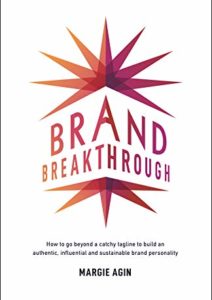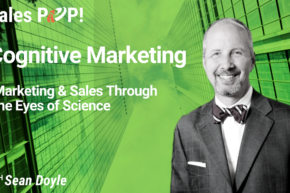Brand identity does not come only from the visual look, but from the way how a company talks to its customers as well. In this Expert Insight Interview, Margie Agin discusses brand storytelling. Margie Agin is a Founder and Chief Strategist at Centerboard Marketing, content expert, speaker, and author.
This Expert Insight Interview discusses:
- The process of storytelling
- Identifying the brand’s personality
- Testing the company’s voice
The Process
In brand storytelling, the hero of the story is always a customer. Customers are the main characters, and the brand serves as a guide to hold their hands and help them achieve their visions and goals. The brand journey and customer journey take way longer than people think. From the sales and marketing perspective, we have to be very careful not to act like the story is over once when we close the sale. The customers still interact with the service, technical, and implementation support, so customer care still has to be at its highest level. Being loyal to the end of the customer journey encourages a customer to make a repeat purchase and to give referrals to others. All the departments of the organization represent the same brand, and they form one universal brand personality in the eyes of the customers.
Identify the Personality
Brand personality is as important for B2B business as it is for B2C business. Slack is a great example of a company which managed to unify the impression its employees, products, and a visual look makes on its customers, and to make an authentic brand personality. Each company has its personality, but many of them might need an external assessment to identify it. The company’s core characteristics that differentiate that company from the others can be found through interaction with its employees. Those core characteristics need to be built up into a personality and one of the techniques used is of an archetype. Companies can personalize some of the archetypal characters such as a rebel, magician, jester, etc. for their marketing and sales purposes. Once when the brand personality is identified, the company needs to work on its consistency in embracing it. The key is for the frontline workers to unify the tone of voice they use in interaction with the customers, no matter if that is email, chat, social media, or a phone call. That can be learned through editorials, workshops, training, etc.
Test the Voice
A good practice for every company to test whether its personality is distinctive enough is to think “in case if we take out our logo from being seen, would the customers know which company communicated this message”? The point is to develop the company’s voice which is distinctive and accepted by the customers.
Our Host
John is the Amazon bestselling author of Winning the Battle for Sales: Lessons on Closing Every Deal from the World’s Greatest Military Victories and Social Upheaval: How to Win at Social Selling. A globally acknowledged Sales & Marketing thought leader, speaker, and strategist, he has conducted over 1500 video interviews of thought leaders for Sales POP! online sales magazine & YouTube Channel and for audio podcast channels where Sales POP! is rated in the top 2% of most popular shows out of 3,320,580 podcasts globally, ranked by Listen Score. He is CSMO at Pipeliner CRM. In his spare time, John is an avid Martial Artist.








Comments